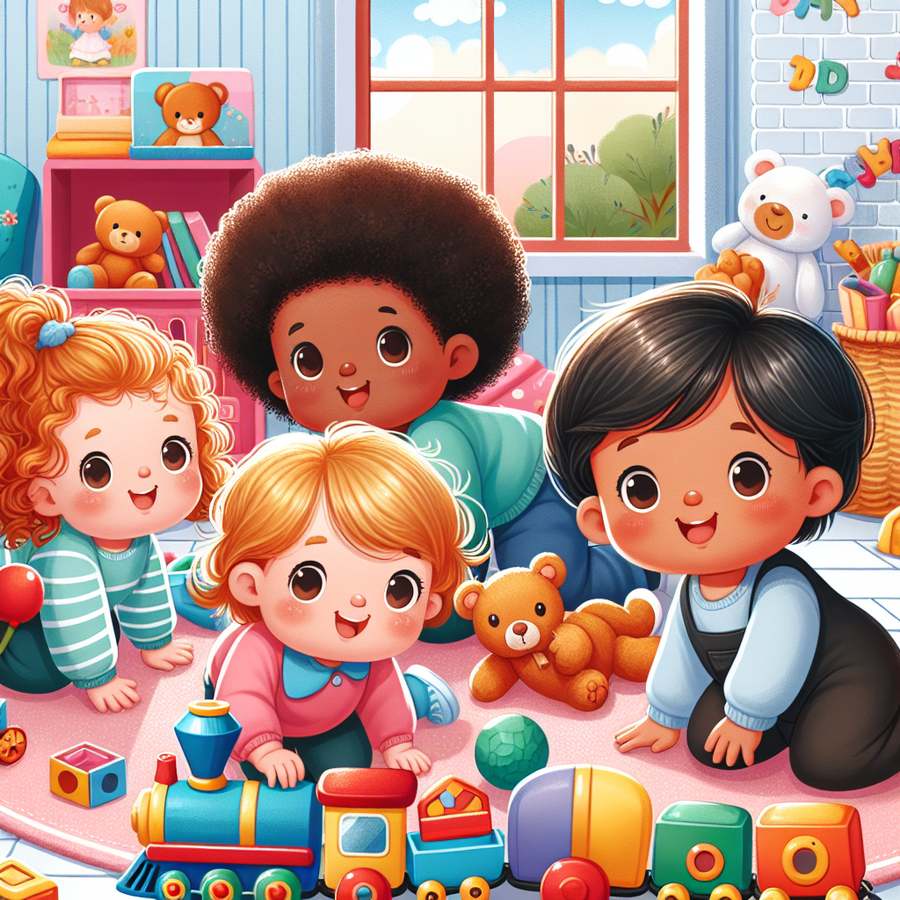Crawling is a significant developmental milestone in your baby’s life, marking the beginning of new independence and exploration. But what exactly is crawling, and how can you support your little one through this exciting phase? This guide dives deep into the world of baby crawling, covering everything from the stages and signs of readiness to the benefits and practical tips to encourage your baby.
What is Crawling and Why is It Important?
Crawling is more than just a means of movement; it’s a complex developmental milestone that involves coordination, strength, and cognitive skills. It’s often the first form of independent movement for babies, usually occurring between 6 to 10 months of age. However, it’s important to note that all babies develop at their own pace, and some may skip crawling altogether, moving straight to standing and walking.
Crawling plays a crucial role in your baby’s physical, cognitive, and emotional development. It strengthens the muscles, improves coordination, and encourages exploration and curiosity. Crawling also lays the groundwork for future movements, such as standing, walking, and running. For more information, the Baby Whys and Hows page on crawling offers a wealth of resources.
Signs Your Baby is Ready to Crawl
Before your baby starts crawling, they’ll show signs of readiness. These include stronger neck and arm muscles, the ability to sit without support, showing interest in moving towards objects, and attempting to push themselves up while lying on their stomach. Recognizing these signs can help you prepare and support your baby’s crawling efforts.
Encouraging tummy time is one of the best ways to support your baby’s crawling development. Tummy time helps strengthen the necessary muscles for crawling and allows your baby to practice lifting their head and chest. Gradually increase tummy time as your baby becomes more comfortable and shows greater interest in exploring their surroundings.
How to Encourage Your Baby to Start Crawling
Encouraging your baby to crawl involves creating a safe, stimulating environment. Ensure your home is baby-proofed, with plenty of open, clutter-free spaces for your baby to explore. You can use toys and objects of interest to motivate your baby to move towards them. Additionally, being on the floor with your baby, showing excitement, and offering praise can greatly encourage their efforts.
It’s also beneficial to let your baby spend time with peers who are already crawling. Watching others can be a powerful motivator for your baby to try crawling themselves. Remember, encouragement and patience are key. Every baby is unique, and comparing your baby’s development to others’ can be misleading. Focus on creating a positive, supportive environment for your baby’s unique journey.
Crawling Variations and What They Mean
Babies can exhibit a range of crawling styles, including the classic hands-and-knees crawl, the bear crawl (on hands and feet), the belly or commando crawl, and even rolling as a means of movement. Each variation is normal and can depend on your baby’s preferences, strength, and environment. Rather than focusing on the style, pay attention to your baby’s progress and enjoyment in moving around.
If you notice any unusual patterns, such as using one side of the body more than the other, or if your baby seems frustrated or unable to move forward, it might be worth consulting with a pediatrician. Early intervention can help address any potential issues and support your baby’s development. Visit the Baby Whys and Hows page on developmental milestones for more detailed information.
When to Seek Help for Crawling Concerns
If your baby is not showing signs of crawling by 12 months, or if you have concerns about their motor skills or development, it’s a good idea to speak with your pediatrician. While some babies may naturally take a little longer to start crawling, it’s important to rule out any underlying issues that might be hindering their progress.
Your pediatrician can provide guidance, support, and possibly recommend a specialist if needed. Early detection and intervention can make a significant difference in your baby’s development. For additional support and resources, consider visiting Baby Whys and Hows page on early intervention.
In conclusion, crawling is a thrilling milestone in your baby’s development, filled with challenges and rewards. By understanding the importance of crawling, recognizing the signs of readiness, and knowing how to encourage and support your baby, you can play a vital role in their journey towards independence and exploration. Remember, every baby’s journey is unique, and the most important thing is to provide love, support, and encouragement along the way.













